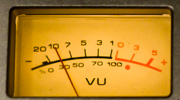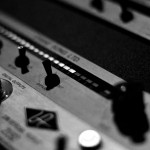 Want bigger & fuller sounding songs? Less is More!
Want bigger & fuller sounding songs? Less is More!
The biggest problem I encounter with inexperienced artists, producers, and engineers these days is that there is too much of everything. Too many parts in the song arrangements. Too many tracks in the recording. Too many plugins in the mix. Too many frequencies competing with each other. Too much clutter in general!
With modern, affordable and powerful computers handling the majority of recording and mixing duties these days, we have virtually unlimited tracks and processing power available to us. The temptation to try to use everything available to us is simply too much for many beginners. In their quest for bigger, fuller, and louder sounding songs, then keep adding more and more of everything to their project, and usually just end of with a muddy mess that doesn’t sound big or full at all.
I covered most of this quite a few years ago in my article Better Mixes Through Subtraction. If you haven’t read that old article, you should read that one first, as all of that still applies, and I’m going to try to not repeat too much of that. Rather, this article is going to expand on some of those ideas.
The most important part of the Better Mixes Through Subtraction article that I do want to repeat here is that it all starts with the song arrangement! Even if you aren’t trying to mix your own songs, go to that article and read the part about song arranging. A great song arrangement is absolutely key to a great song, and a great sounding mix! Too many parts competing for the listener’s attention and the limited space in the mix will just end up making your song sound cluttered and small.
Recently I read about another great arrangement simplification idea that surprisingly had not occurred to me before. I was reading about how on one of Peter Gabriel’s earlier albums, they didn’t use any cymbals at all for the whole album (Phil Collins and Jerry Marotta played on that album, which was Peter’s third album). I often struggle with mixes with live drummers who have poor cymbal technique, or who play the cymbals much louder than any other pieces of their kit. Cymbals take up a surprisingly large range of frequencies, and since they tend to have lots of higher frequencies, they really cut through everything and can make other instruments (and even vocals) harder to hear because of some masking effects. Simply not using cymbals frees up a HUGE amount of space in the mix for other elements. In addition, it forces you, or your drummer, to be more creative with the drum and percussion parts. Even if you are just programming drum parts, try leaving out the cymbals and see how much space that frees up for you and how much clearer and bigger everything else sounds without tons of cymbals taking up space throughout the song.
I recently did this on a remix project I was working on. I programmed a simple drum part without any cymbals at all for the first half of the song, and found that I didn’t miss them at all. It really gave much more space to the song and made everything else sound much more full. About half-way through the song I introduced a very subtle ride cymbal and a few soft crashes here and there… all very subtle in the mix. It just helped to bring them in later in the arrangement to add some contrast. You could try something similar by not using cymbals during verses, and then bringing them in for a chorus, or even just a bridge, to add some more contrast to emphasize those parts of the songs. Most drummers do this type of thing to a small degree naturally by using a simpler hi-hat part for verses and then bringing in rides and crashes for choruses or the bridge. But, for even more contrast, try leaving out all cymbals during the verses!
In Better Mixes Through Subtraction I touched on the problem with having too many tracks available to work with, and the tendency to want to fill them up. Now days, it’s not just tracks, but it’s also plugins! There are plugins for everything now, emulating all sorts of classic equipment, as well as new and creative plugins that have no equal in the physical world. Modern computers can easily handle several hundred plugins in a single project. There are many free and low cost plugins available, in addition to the higher-end plugins (which still cost a fraction of any hardware equivalent), plus the plugins that are bundled with most DAW software.
With all the plugins available these days, it’s easy to get caught up and to become a collector, or hoarder, of plugins. I’ll admit that I suffer a bit from that myself, as I have a rather huge collection of plugins (all legal and paid for, since I choose to support the developers who make my job easier).
However, just because you have a huge collection of plugins doesn’t mean you have to use them all on every project! Sometimes people pull up a song to mix and start adding plugins before they have really even listened to anything. The first thing you should do is pull up all the tracks and listen to the song all the way through (especially if it’s not your own song, and you are mixing for someone else). Listen through several times and try to get a good balance just by using the channel faders, without any plugins at all. If the tracks were recorded well, and it’s a good arrangement where there aren’t lots of parts competing against each other, you should be able to get a pretty good sounding mix using nothing except the faders to balance the levels.
Obviously, you are going to want to add some effects and some plugins, or hardware inserts, here and there to polish the mix and make it even better. But, try to force yourself to see how close you can get with just balancing levels first. You might be surprised.
Once you do start adding processing and effects and really fine tuning things, if you find yourself struggling with a mix, sometimes it’s good to bypass all the plugins and take another listen. You may find that you’ve been trying to do too much, and it might sound better without all those plugins. At the very least, some of the tracks might sound better with fewer plugins. Remember, that even though the plugins may be digital, it doesn’t mean that they aren’t adding phase shift, distortion, or other artifacts to your signal (sometimes intentional, as when emulating classic analog hardware, and sometimes not). The more plugins you stack up on each track, the more you are changing, and possibly degrading, the audio. Don’t use more than you really need! Just because you have the coolest console channel and tape machine emulations doesn’t mean you have to use them on every single track (even though the temptation is there to do so). Try to listen critically to see if those types of “color” plugins are actually helping the track or not.
Same goes for compressors. With plugins, we can now have as many compressors as we want. When I started working at a major studio in the 90s, we had maybe 10 hardware compressors at most to work with in either mix room. We all learned to work within those “limitations” and didn’t need to have one or more compressors on every channel for the mix. Some people use compressors out of laziness so they don’t have to do as much volume automation. Other times the compressors are used more as an effect, or to add “color” to a track. However, you can get by without using ANY compression at all if you take the time to automate your volume on tracks. If you take the time to use automation instead of compression on everything, you may find that you like that sound much more. Bruce Swedien, the engineer of choice for Michael Jackson & Quincy Jones, is famous for his avoidance of compression, especially on drums & percussion. He firmly believes that many people over use compression, sucking the transients and life out of the audio.
Another idea you can try to keep yourself from doing too much, is to purposely set some limitations. For example, you can pretend you are working in the days of analog tape and limit yourself to no more than 24 tracks. Take that even further and limit yourself to a certain number of compressors and effects, just like the days when we had limited numbers of hardware devices to work with. By limiting what you have to work with, you may find that it forces you to work harder on your songwriting and arranging skills, and will in turn make the job of mixing much easier for you or your mixing engineer, with the end result being much better sounding songs!
Take that idea even further by deleting all but the most essential plugins from your system, and limiting the number of instruments and sounds you have to work with as well. You may find that fewer choices will help improve your songwriting and arranging by allowing your brain to stay in the creative mode instead of having to constantly switch to technical mode while you hunt through endless amounts of sounds and plugins. Or better yet, write your songs with just a piano or guitar first, instead of firing up your computer, setting up a new project, and hunting through endless instrument plugins and sounds, possibly losing your creative spark along the way.
A great song will be great no matter if it’s played with a single instrument, or hundreds of instruments. Concentrate on what’s important, and don’t add more than is needed.
Just remember, Less is More!
